Mô tả chi tiết
Introduction
The Canon EF 28mm f/2.8 completes the local tests of the classic Canon wide angle fix-focals. The lens was first released in 1987 so it is as old as the EOS system itself. On APS-C DSLRs the field-of-view is equivalent to 45mm so it can almost be considered as a standard lens here.
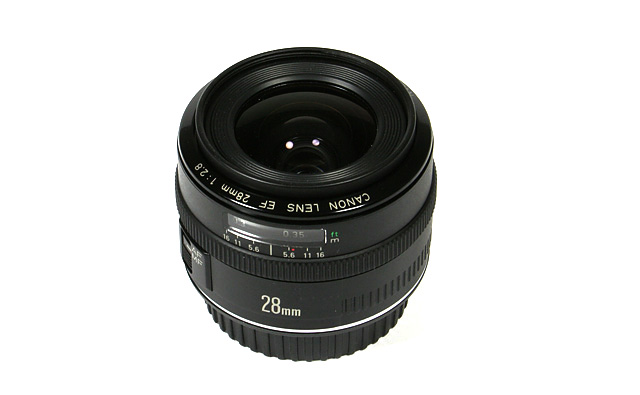
The lens is a rather simple being with just 5 elements in 5 groups including one molded aspherical element. The aperture mechanism features 5 blades. With a min. focus distance of 0.3m the max. object magnification is about 1:8. It´s really a miniature lens with a size of just 67x42mm and a weight of 185g. The filter size is 52mm.
The build quality of the lens is quite decent with good quality plastics. The inner lens tube extends a little when focusing towards closer distances but the front element does not rotate - using a polarizer is therefore no problem. The focus ring operation isn't all that impressive - typical for many Canon lenses of that era it feels a little scratchy. Thanks to the small number of elements the AF is very fast despite its conventional micro motor.
Distortions
The lens showed a slight to moderate degree of barrel distortions (~1%). Not stellar for a fix-focal lens but still pretty decent in absolute terms.
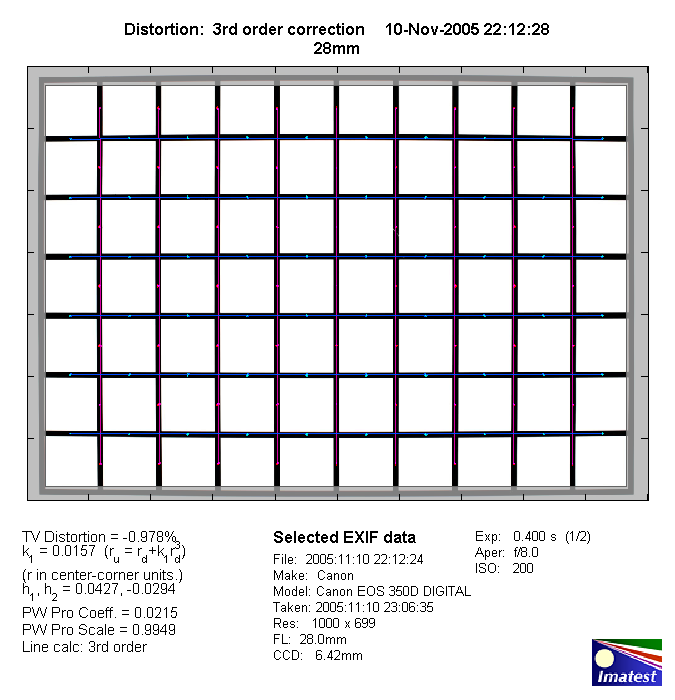
The chart above has a real-world size of about 120x80cm.
Vignetting
On an APS-C DSLR the full frame EF 28mm f/2.8 enjoys the usual sweet spot but the effect isn't all that pronounced regarding vignetting which is relatively high at 0.8EV at max. aperture. However, from f/4 and up the issue is quite negligible.
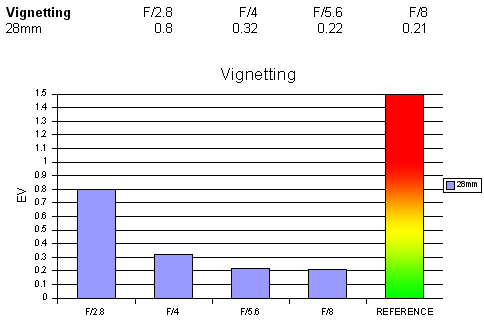
MTF (resolution)
The resolution figures in the lab where somewhat puzzling so I repeated the tests several times in order to verify the findings. The center performance reaches its excellentpeak at max. aperture and deteriorates towards medium aperture - a highly unusual characteristic which is unprecedented so far for a large aperture wide-angle lens. The border performance behaves a little more conventional with good results at f/2.8 increasing to very goodfigures at medium aperture settings. So despite the rather unusual MTF curve the performance is on a pretty high level.
The resolution chart has been revised to take field curvature into account.
Below is a simplified summary of the formal MTF findings. The chart shows in line widths per picture height (LW/PH) which can be taken as a measure for sharpness. If you want to know more about it you may check out the correspondingImatest Explanations.
 |
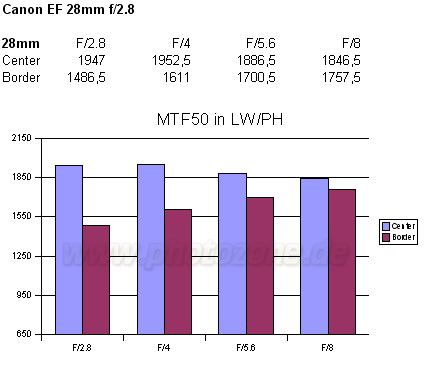 |
Chromatic Aberrations (CAs)
CAs (visible as color shadows at harsh contrast transitions) can reach an average CA pixel width of significantly more than 1 pixel at the image borders - a weak performance here especially for a fix-focal lens. CAs can be reduced and usually even eliminated via imaging tools but such a lens should definitely perform better than that.
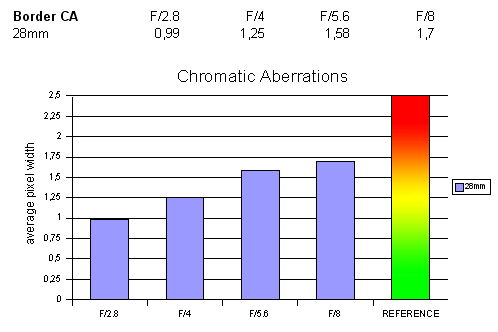
Sample Shots
Ok, finally here're some sample shots taken with the EOS 350D (converted RAWs). Click on a thumbnail to view the original file (opens in a separate window). Please note that the full-size images are supplied in JPEG2000 format. You should be able to display the images in most modern imaging applications such as Photoshop. This is a measurement to limit the bandwidth which is a scarce resource.
If you prefer to watch the full-size samples in your Internet Explorer browser you may try theJPEG2000 ActiveX Control (Windows) plug-in. I've checked out a few plug-ins for Mozilla/Opera but haven't really found a good one. Firefox will open IE if you install the ActiveX Control above.
Verdict
The Canon EF 28mm f/2.8 may not be the most attractive lens on the market but it is still interesting nonetheless. It is very affordable in combination with a pretty impressive optical performance (except CAs) and quite decent mechanics. However, it faces pretty stiff competition from the Sigma AF 30mm f/1.4 EX DC HSM which is a little better in the center but worse at the borders. The Canon is much cheaper though.


 0 đánh giá
0 đánh giá






Bình luận